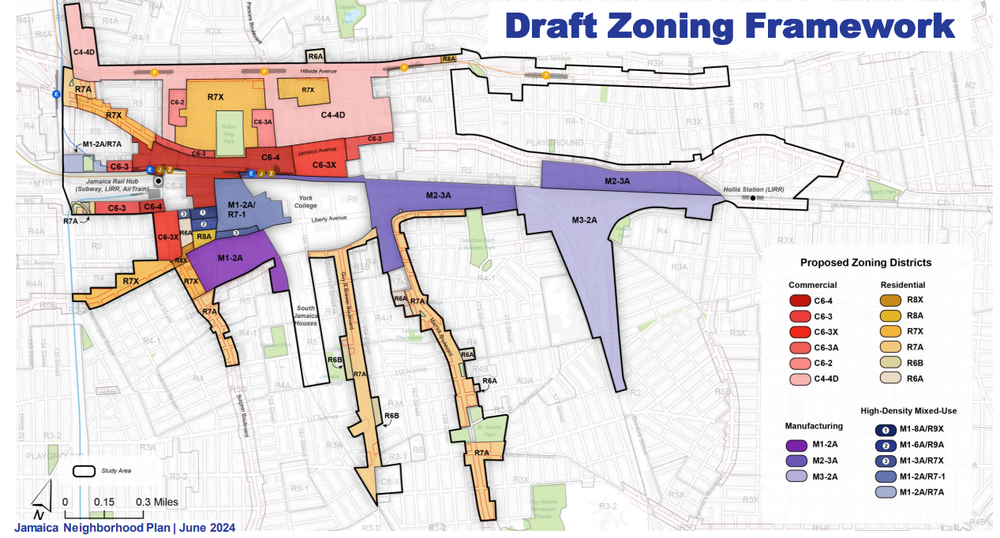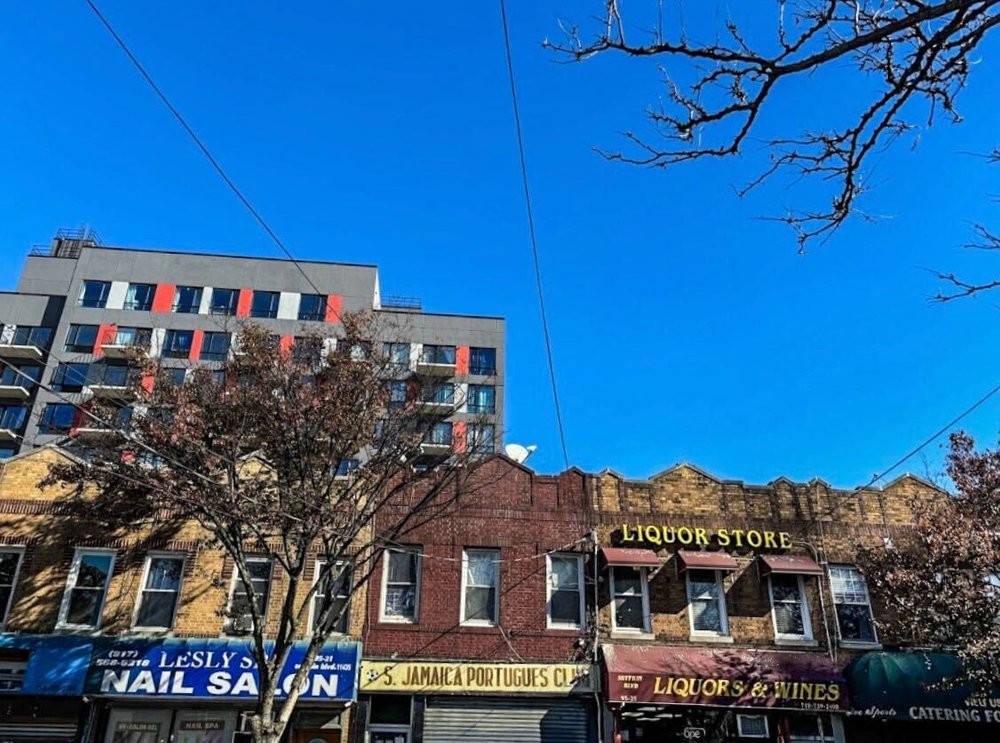One of NYC’s busiest train stations is at the heart of 12K-unit Queens housing plan
March 20, 2025, noon
The city is starting the approval process to change land-use rules and allow for larger development in Jamaica.

The Adams administration’s latest plan to build out of the dire housing crisis is targeting the third-busiest train station in New York City.
If the proposed changes are approved, they could allow for the construction of about 12,000 new homes in a roughly 300-block swath of Queens near Jamaica station, where tens of thousands of people board Long Island Rail Road trains, the AirTrain to JFK Airport, the subway and dozens of different bus lines every day.
The Department of City Planning is officially starting a monthslong approval process for the plan Thursday. The City Council could vote on the proposed changes as early as September, following a series of public hearings.
About 5.9 million people bought LIRR tickets at Jamaica station last year, according to MTA data. City Planning Director Dan Garodnick told Gothamist that transit access makes Jamaica an ideal location for new housing development. Current rules for the area restrict building heights and don’t require developers to include affordable apartments in new residential projects.
“This is one of the most bustling commercial and transit hubs in the city, but outdated zoning and a lack of housing and investment have really held it back,” Garodnick said.

To envision a map of the planned changes, think of an octopus sprawled across southeast Queens. The body of the sea creature is the area around the train station. The city proposes the largest new buildings here along busy Archer, Jamaica and Hillside avenues, as well as the blocks in between. The octopus' tentacles are the main thoroughfares leading toward the station, such as Merrick, Guy R. Brewer and Sutphin boulevards, where the city is proposing more moderately sized housing.
Where there are now blocks lined with one- and two-story businesses and restaurants along Jamaica Avenue, the plan would allow them to be replaced with apartment buildings up to 23 stories tall. Under the plan, developers would be required to reserve at least a quarter of newly created apartments for low- and middle-income renters.
Previous land-use changes in 2007 have already spurred high-rise development directly across from Jamaica station, but those changes also allowed developers to enter into voluntary agreements that have generated fewer affordable apartments than current rules mandate.
Hillside Avenue, where the F train terminates in Queens, could see larger apartment complexes up to 14 stories tall. On other major roadways, developers would be permitted to build up to 11 stories.

Mayor Eric Adams’ administration counts the “Jamaica Neighborhood Plan” among its strategies to add hundreds of thousands of new homes to meet the city’s intense demand for housing. Home sale prices and rents remain at record highs, and just 1.4% of apartments are vacant and available to rent, according to the city’s latest housing survey.
Those problems are clear in Jamaica and the surrounding area.
Census data examined by the city planning department shows Jamaica’s population increased by more than 13% from 2010 to 2020. But the amount of new housing increased by only 10% over that span, according to City Planning statistics. Nearly a third of Jamaica residents are considered “severely rent-burdened,” meaning they spend more than half their income on rent, per demographic data compiled by NYU’s Furman Center.
Garodnick, the planning director, said the city was “stepping up and saying that we don't need to live this way” through its neighborhood-level rezoning plans, along with the mayor’s “City of Yes” plan that was approved last year to allow new development citywide.
“Our housing crisis in many ways is of our own making,” Garodnick added. “These rules are under our own control and we would be well-served to reform them to meet our own goals.”
He likened the Jamaica plan to a package of changes in the East Bronx that were approved by the City Council last August and allow more development near Metro-North Railroad stations.

City Councilmember Nantasha Williams, who represents most of the area covered by the rezoning plan, said she supports the changes, especially because the Adams administration has pledged to upgrade sewer lines, local parks and institutions like York College.
“What I love about the plan is it’s coupled with major investments into the area by the city,” Williams said. “The Jamaica area has been historically underinvested in, and I’m excited for a lot of long-standing physical and social infrastructure challenges we anticipate will be addressed by this plan.”
The proposal would reshape parts of the neighborhood.
At a City Planning Commission on the proposal Monday, Commissioner Leah Goodridge questioned just how “affordable” the apartments would be after they’re built. The Furman Center analysis found the median household income in the community district that includes Jamaica was about $75,000 in 2023, though the number varies considerably in different sections of the neighborhood.
“I’ve learned, after being on this commission, when we say affordability, it can really be like six figures for a one-bedroom for one person,” Goodridge said, referring to affordable housing lotteries geared toward more middle-income renters earning upwards of $100,000 a year.
Sarit Platkin, director of neighborhood planning at the city’s Department of Housing Preservation and Development, said under current city rules the 4,000 potential affordable units will likely range from $1,400 to $4,000 per month for a two-bedroom.
Platkin said developers could also choose a new option to cap rents in fewer apartments but at prices that are far lower, targeting New Yorkers who earn around $56,000 a year.
“Half of the households would be earning less than that,” she said.
The plan will next go before the local community board and Queens Borough President Donovan Richards for advisory recommendations.
It marks the second neighborhood-level rezoning to advance through the public review process this week. The City Planning Commission on Wednesday voted to approve a plan to change land-use rules to allow about 4,600 new apartments along an industrial stretch of Atlantic Avenue and surrounding blocks in Crown Heights and Bed-Stuy in Brooklyn. The City Council will likely vote on that proposal this spring.
It was home to the NY Daily News. Now you can rent an affordably priced apartment there. Trump admin approves funds for NYC housing nonprofits, with conditions — then abruptly rescinds More NYC apartments now have washer-dryers. Is it worth the extra cost?